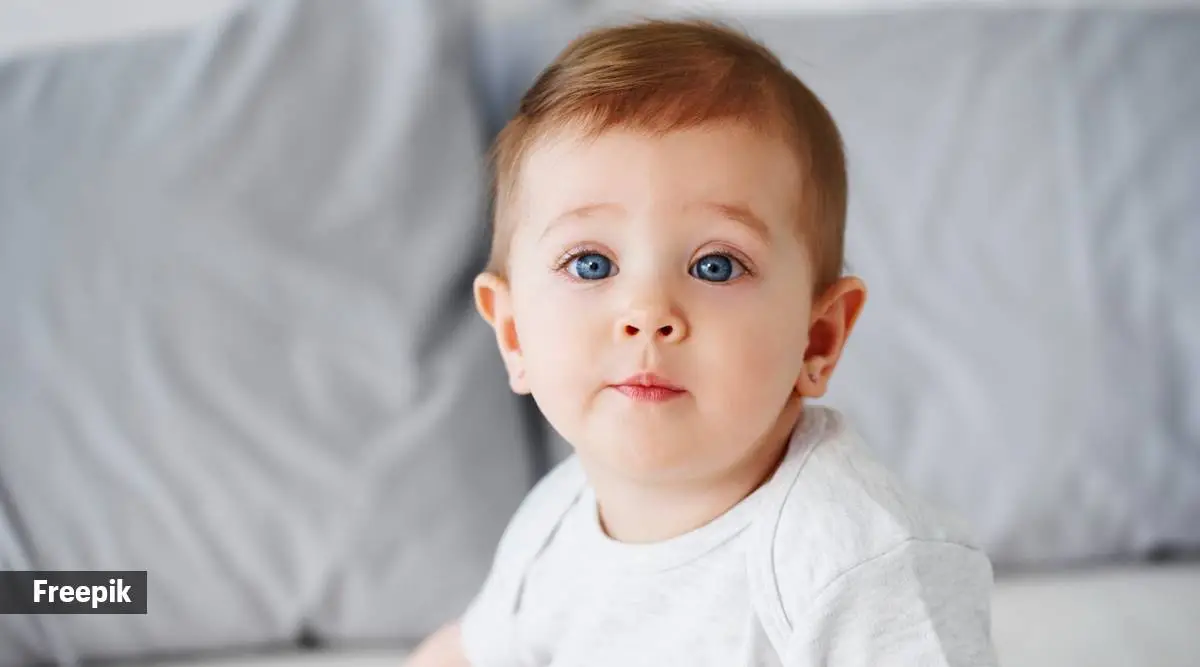📣 For more lifestyle news, click here to join our WhatsApp Channel and also follow us on Instagram
Babies are born with 305 bones that fuse to become 206 by the end of these many years
In babies, the bones are very soft, flexible, and partly made of cartilage so that they can curl up and fit inside the mother's womb.
 Slowly some of the bones in the baby fuse to each other (separating the gap which previously contained cartilage) and are replaced by bone. (Pic source: Freepik)
Slowly some of the bones in the baby fuse to each other (separating the gap which previously contained cartilage) and are replaced by bone. (Pic source: Freepik)The human body, undoubtedly, is one of the most sophisticated machines, and rightly so! Despite reading so much about it over the years, we are still met with fascinating facts about it that make our jaws drop — all of which we try and share with you as part of our ‘Know Your Body’ series. Today, we are here with some bone math.
So, you must definitely know that the human body has 206 bones. But, did you know that babies are born with around 305 bones? Yes, you read that right. However, over a period of years, some baby bones fuse, thereby reducing the number of overall bones. “Yes, newborn babies have around 305 bones, and infants have about 270, which fuse to become 206 by the end of 20 years,” Dr Suresh Kumar Panuganti, Lead Consultant-Pediatric Critical Care and Pediatrics, Yashoda Hospitals Hyderabad told indianexpress.com.
Explaining the process, Dr Asmita Mahajan, Consultant Neonatologist and Pediatrician, SL Raheja Hospital, Mahim-A Fortis Associate said that in a baby, the bones are very soft, flexible, and partly made of cartilage so that they can curl up and fit inside the mother’s womb. “Slowly, over the growing years, the cartilage is replaced by bone through a process called ossification, which entails the deposition of calcium, and gathering of bone cells — called osteoblasts,” she said.
She further shared that eventually, the bones fuse with each other, separating the gap that previously contained cartilage, and are replaced by a larger bone. “Therefore, the total number of actual bones decreases. In fact, the soft spots in the skull (fontanelles) also fuse, and make the skull a continuous structure over the first one and a half years of life,” she informed.
When do children stop growing?
The growth of children’s bones primarily takes place at the ends of their bones, a region known as growth plates. “Once the child reaches its maximum capacity of bone size, the growth plates close. That’s when a person stops growing,” says Dr Mahajan, adding that growth plates are weaker than actual bones. “Hence, fractures are more common at the region of the growth plate,” she said.
 After the child becomes an adult, the bones will not grow but they can still remodel themselves by a process of bone clearing and making and reshaping. That is how adults heal from fractures. (Pic source: Freepik)
After the child becomes an adult, the bones will not grow but they can still remodel themselves by a process of bone clearing and making and reshaping. That is how adults heal from fractures. (Pic source: Freepik)
Dr Panuganti added that the bone grows in length by a continuous growth at the epiphyseal plate. “The increase in the girth of the bone is by subperiosteal new bone deposition. At the end of the growth period, the epiphysis fuses with the diaphysis, and the growth stops,” he added, further elaborating that after the child becomes an adult, the bones will not grow but they can still remodel themselves by a process of bone clearing, making, and reshaping. That is how adults heal from fractures.
Fractures in babies can heal much faster
On average, bones in children unite in half the time compared to that in adults and failure of union is uncommon in fractures of children.
“A child’s bones are more flexible than those of an adult. Hence, sometimes the break isn’t all the way through the bone, but only on one side of it. This type of break is called a greenstick or bending fracture. Growing bones tend to buckle or bend before breaking, which often leads to unique fracture patterns. For instance, one side of a bone may bend, causing a greenstick (bending) fracture. Or one side of the bone can buckle and become dented, causing a buckle fracture,” shared Dr Panuganti.
Also, flat and cancellous bones unite faster than tubular and cortical bones. Spiral fractures unite faster than oblique fractures, which in turn unite faster than transverse fractures. Comminuted fractures are usually the result of a severe trauma or occur in osteoporotic bones, and thus heal slower.
📣 For more lifestyle news, follow us on Instagram | Twitter | Facebook and don’t miss out on the latest updates!
📣 For more lifestyle news, click here to join our WhatsApp Channel and also follow us on Instagram
- 01
- 02
- 03
- 04
- 05



























